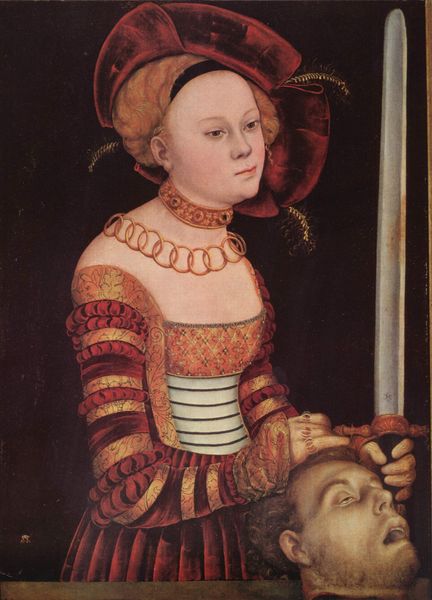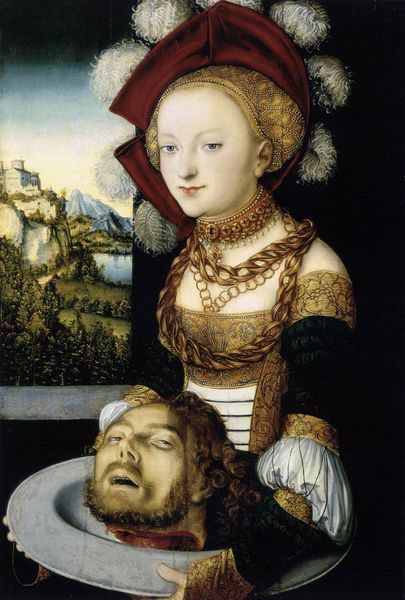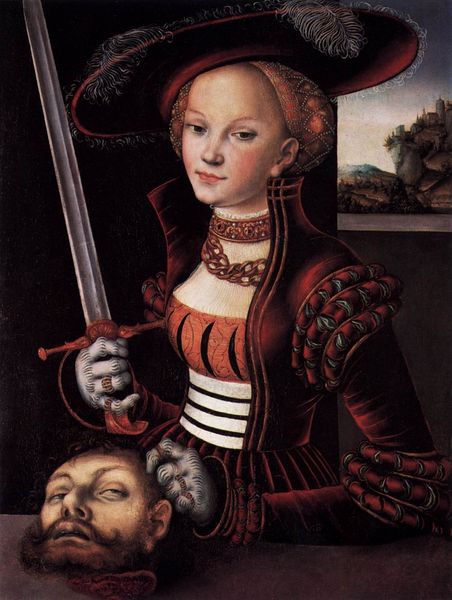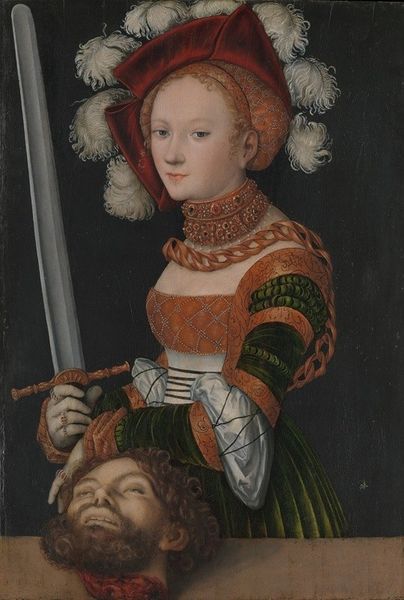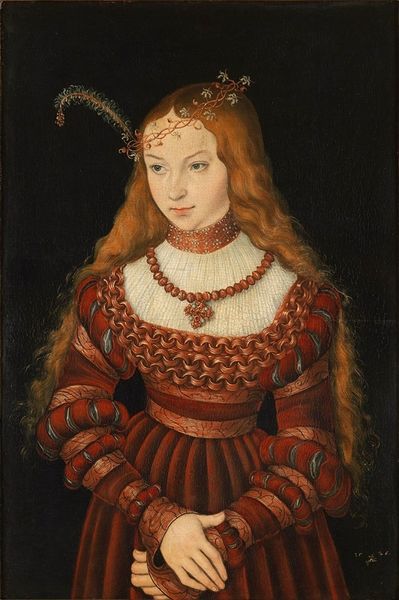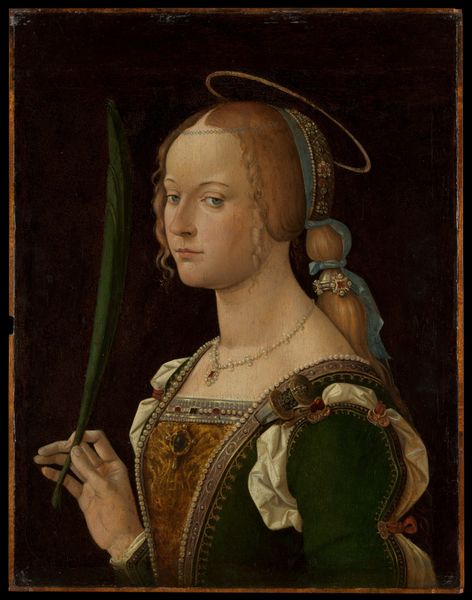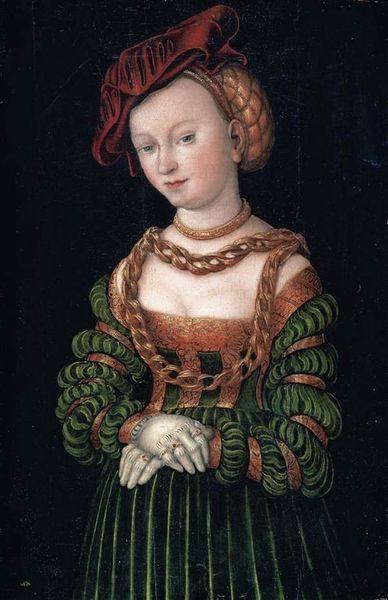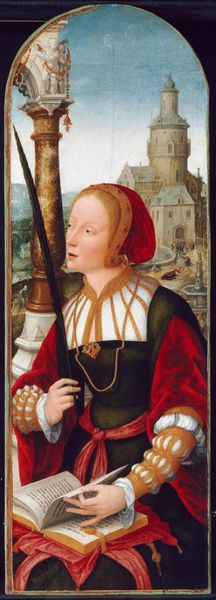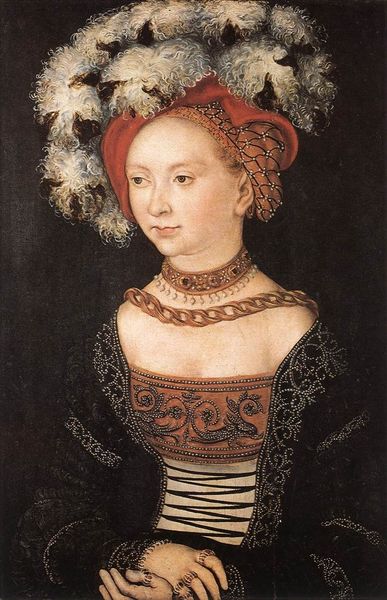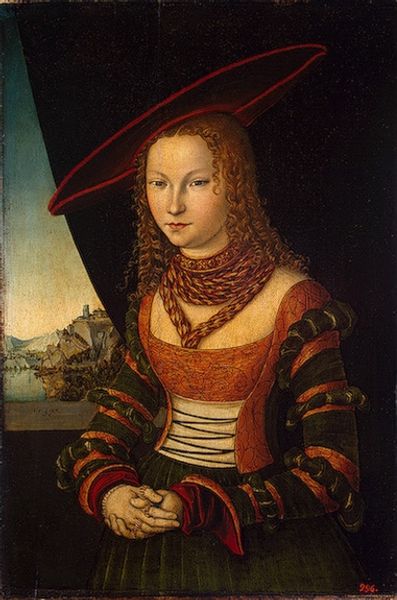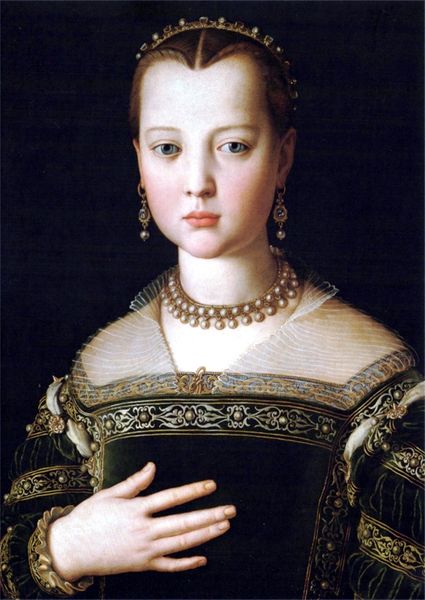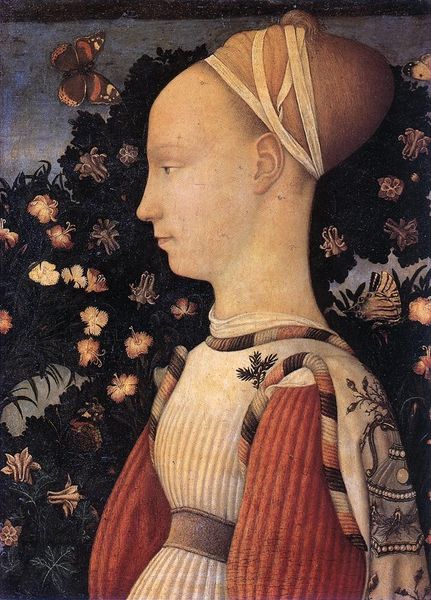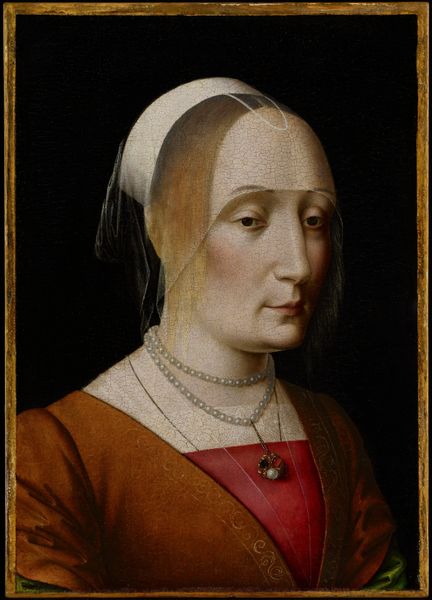
Dimensions: 86 x 59 cm
Copyright: Public domain
Curator: This is Lucas Cranach the Elder’s “Judith,” an oil painting dating back to around 1515, now held in the Kunsthistorisches Museum in Vienna. Editor: Stark. Immediately striking, especially that cool detachment in Judith’s eyes contrasting sharply with the raw, brutal image she presents. There’s such calculated artifice at play here, isn’t there? Curator: Absolutely. Consider Cranach's workshop and how these pieces would've been created and distributed. These paintings weren't solely individual creations; assistants played roles in preparing the panels, grinding pigments, even painting parts of the composition. How does understanding the social and economic framework around art production change our view of Cranach's authorship and artistry here? Editor: It undeniably complicates it. The commodification of such a charged image, produced on near assembly line scale, meant it would've been seen in domestic spaces, reinforcing certain social structures related to gender, power, and, potentially, anxieties surrounding them. These images shaped the era, didn't just reflect it. Curator: The materials also speak volumes: The particular wood chosen for the panel, the sourcing of the pigments, all indicate choices reflecting budget, accessibility, and perhaps desired symbolic associations, informing its reception. Editor: True, the materials used dictate a certain visual economy. Beyond the textures, it's crucial to think of where this image sat—commissioned by courts, reinforcing religious narratives, used for diplomacy. It was certainly no neutral object. Curator: Do you think there are clues related to the making here? It almost appears he quickly layed down an underlayer to catch form and space. Editor: Undoubtedly. Considering this period in the 16th Century—museums still weren't institutions as we conceive them today—how different it must have been viewing this then from experiencing it now. Imagine encountering it in a home or palace compared to within our hushed halls today. It really shifts the weight of the act of viewing. Curator: And the labor – the anonymous apprentices grinding the pigments. Their hands shaping art history are too often ignored. Understanding the processes and workshops makes this “Judith” more than just a picture; it becomes evidence of a moment in art's social production. Editor: Exactly, and for that reason, thinking about how we present and frame it now—how we display it, what texts accompany it, which stories we elevate – influences its meanings continuously. Thanks for taking the time. Curator: The pleasure was mine. Until next time.
Comments
No comments
Be the first to comment and join the conversation on the ultimate creative platform.
